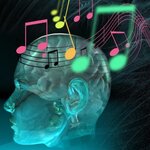Neuroscience

The march toward understanding the etiology of autism took a giant step foward today.
In a landmark genome-wide association study, published online today in Nature, researchers found that a variant on chromosome 5 was about 20 percent more common in autistic children.
Researchers examined DNA from more than 3,100 people in 780 families (with at least two autistic children), and then looked at an additional 1,200 individuals from families affected by autism, as well as nearly 6,500 healthy controls.
"The scientists evaluated the relationship of more than half a million…

Autism is a complex brain disorder that strikes in early childhood. The condition disrupts a child's ability to communicate and develop social relationships and is often accompanied by acute behavioral challenges. The Centers for Disease Control and Prevention report that one in 150 American children is diagnosed with an autism spectrum disorder; the disorder affects four times as many boys as girls. The diagnosis of autism has expanded tenfold in the last decade.
Researchers from over 30 institutions across the country have identified a new gene variant that is highly common in autistic…

A new longitudinal study of children's personality traits and interests tells us that sex-typed characteristics develop differently in girls and boys. The study, by researchers at The Pennsylvania State University, the University of Hawaii at Manoa, and Purdue University, appears in Child Development.
The researchers looked at first- and second-born siblings from nearly 200 mostly White, middle-class American families. They collected information through home interviews conducted over seven years, activity diaries provided by the children, and saliva samples that measured the children's…

Most people are expert readers, but it is something of an enigma how our brain achieved expertise in such a recent cultural invention which requires a cognitive interface between vision and language.
The first alphabetic scripts are thought to have been invented only around four to five thousand years ago so it is unlikely that enough time has elapsed to allow the evolution of specialized parts of the brain for reading.
While neuroimaging techniques have made some progress in understanding the neural underpinning of this essentially cultural skill, the exact unfolding of brain activity…

Autism is a complex brain disorder that impairs social, communications and behavioral development. It is often characterized by extreme behavior. A new study by University of Utah School of Medicine researchers and conducted with Utah children says kids who are firstborn or breech or whose mothers are 35 or older when giving birth are at significantly greater risk for developing an autism spectrum disorder.
Firstborn? Those are 50% of all kids in America.
In the April 27, 2009,issue of Pediatrics, the researchers say that:
Women who give…

Scientists have studied gamma oscillations, high-frequency brain waves, for over 50 years in the belief that they are crucial to understanding consciousness, attention, learning and memory. Now researchers have found a way to induce these waves by shining laser light directly onto the brains of mice.
The work takes advantage of a newly developed technology known as optogenetics, which combines genetic engineering with light to manipulate the activity of individual nerve cells. The research helps explain how the brain produces gamma waves and provides new evidence of the role they play in…

Since you are all inquisitive scientists, it is not a big surprise that sex is a popular topic of study in the real world. I attended a talk by Mary Roach, author of “Bonk: The Curious Coupling Of Science And Sex” , at UC Davis on Monday. Aside from the series of thank-yous provided by the introducer that seemed more appropriate for an Academy Award than an author of a pop science book on sex, it got right to the meat and potatoes.
She opened with the statement, “Thank you for coming…er, I mean attending.” The relieved laughter (probably that she wasn’t going to…

This guy is the poster child for computer nerd with no social life. Not that I'm making fun - my social life is pretty much nil.
I'm also disturbed that technology moves this fast. I still haven't bought into this twitter thing - I don't tweet or tweetle or twit or whatever, and this guy has already stepped it up to the next level. Thanks, Adam Wilson, for making me feel like an unaccomplished lazy slug.
Adam Wilson, a biomedical engineering graduate student at the University of Wisconsin-Madison, has figured out how to "tweet" using just the power of his brain. His method uses the Brain…

Deteriorating screws in bridges, fish that listen in the dark, medical devices that use sound to treat disease, the detected comeback of a long-gone whale, the sound of hyenas, cheese, and bagpipes, and what evolution can teach us about cowardice.
These are just a few of the topics that will be covered at the 157th meeting of the Acoustical Society of America (ASA), which convenes from May 18-22 at the Hilton Portland&Executive Tower in Portland, Oregon. There, acoustical scientists and engineers will present more than 1,000 talks and posters related to acoustics, a cross-section…

Every brain has a soundtrack. Its tempo and tone will vary, depending on mood, frame of mind, and other features of the brain itself. When that soundtrack is recorded and played back -- to an emergency responder, or a firefighter -- it may sharpen their reflexes during a crisis, and calm their nerves afterward.
Over the past decade, the influence of music on cognitive development, learning, and emotional well-being has emerged as a hot field of scientific study. To explore music's potential relevance to emergency response, the Dept of Homeland Security's Science&Technology Directorate (S…